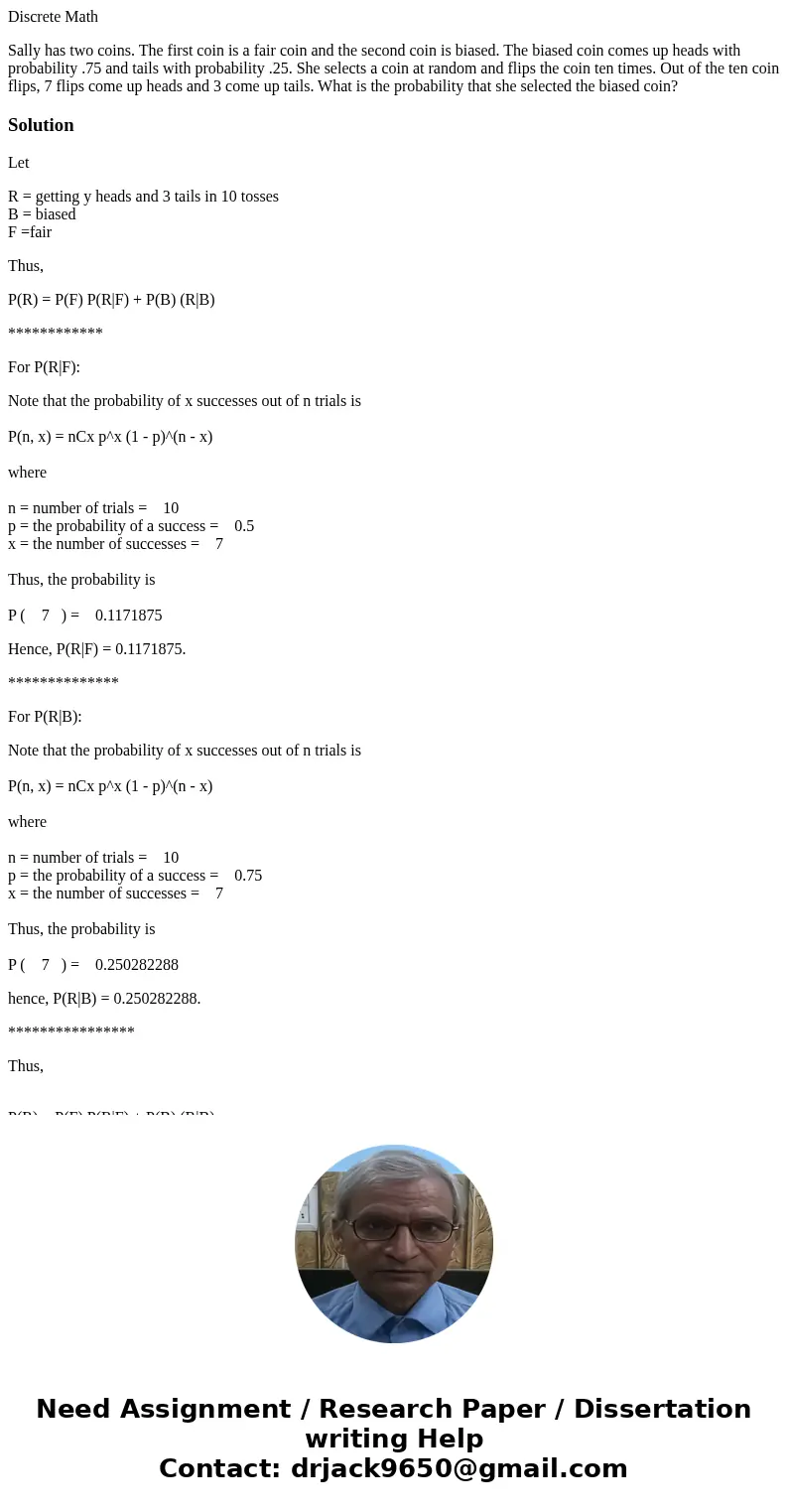Discrete Math Sally has two coins The first coin is a fair c
Discrete Math
Sally has two coins. The first coin is a fair coin and the second coin is biased. The biased coin comes up heads with probability .75 and tails with probability .25. She selects a coin at random and flips the coin ten times. Out of the ten coin flips, 7 flips come up heads and 3 come up tails. What is the probability that she selected the biased coin?
Solution
Let
R = getting y heads and 3 tails in 10 tosses
B = biased
F =fair
Thus,
P(R) = P(F) P(R|F) + P(B) (R|B)
************
For P(R|F):
Note that the probability of x successes out of n trials is
P(n, x) = nCx p^x (1 - p)^(n - x)
where
n = number of trials = 10
p = the probability of a success = 0.5
x = the number of successes = 7
Thus, the probability is
P ( 7 ) = 0.1171875
Hence, P(R|F) = 0.1171875.
**************
For P(R|B):
Note that the probability of x successes out of n trials is
P(n, x) = nCx p^x (1 - p)^(n - x)
where
n = number of trials = 10
p = the probability of a success = 0.75
x = the number of successes = 7
Thus, the probability is
P ( 7 ) = 0.250282288
hence, P(R|B) = 0.250282288.
****************
Thus,
P(R) = P(F) P(R|F) + P(B) (R|B)
P(R) = 0.5*0.1171875 + 0.5*0.250282288 = 0.183734894
Therefore, as
P(B|R) = P(B) P(R|B) / P(R) = 0.5*0.250282288/0.183734894
P(B|R) = 0.681096232 [ANSWER]

 Homework Sourse
Homework Sourse